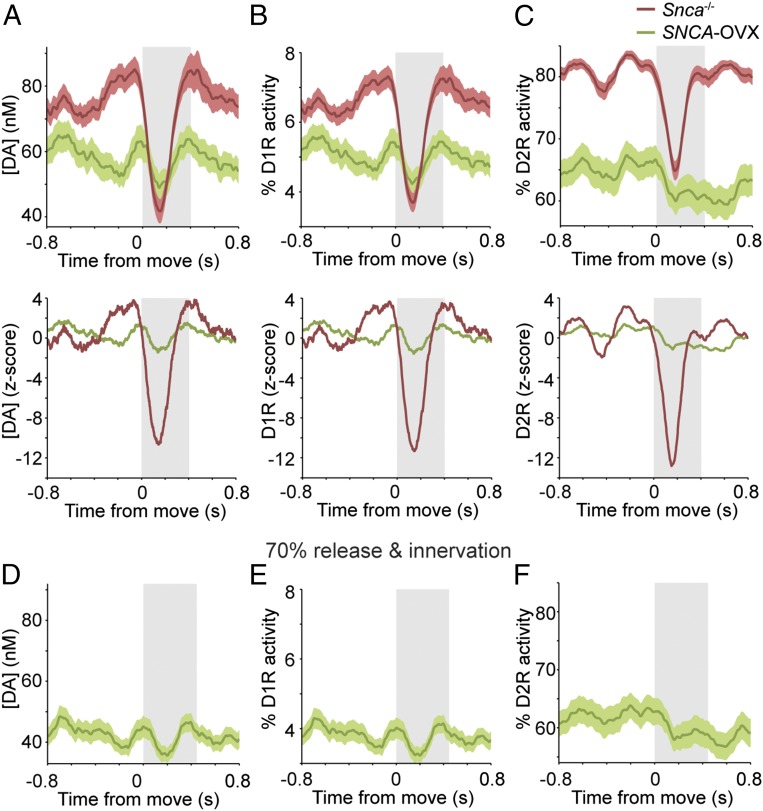Fig. 5.
Movement-related changes in striatal dopamine signaling are lost in parkinsonian mice. (A, Upper) Dorsal striatal dopamine concentrations (mean responses ± SEM) simulated using movement-related activity from SNc neurons recorded in Snca−/− littermate controls (red) or in parkinsonian SNCA-OVX mice (green). (Lower) Corresponding z-scores. (B and C, Upper) Activity of low-affinity D1 receptors (B) and high-affinity D2 dopamine receptors (C). (Lower) Corresponding z-scores. (D–F) Dopamine concentration (D), D1 receptor activity (E), and D2 receptor activity (F) modeled with parameters adjusted to match deficits present in aged SNCA-OVX mice (the abnormally low firing rate of SNc neurons plus a 30% reduction in dopamine release and dopaminergic innervation).

